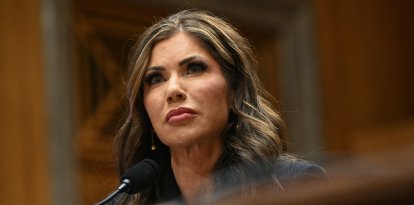Administration considers banning flavored milk in schools
Some school officials expressed concern that the restriction would cause students to drink less milk, reducing their intake of calcium and other nutrients.

(Cordon Press)
The Department of Agriculture (USDA) intends to veto the consumption of flavored milk in the nation's elementary and high school cafeterias, The Wall Street Journal reported.
The USDA justified the measure on the grounds that flavored milk - which includes chocolate, strawberry and other varieties - can contain as much added sugar as a soft drink, which is counterproductive to health.
What to do with flavored milk?
Cindy Long, administrator of USDA's Food and Nutrition Service, explained in remarks to the WSJ that the department is considering two options:
- Completely exclude flavored milk from primary and secondary schools.
- Continue to offer flavored milk, but with a new limit of less than 10 grams of added sugar per 8 ounces (this option involves the dairy industry).
Long stated that the department expects to make a decision early next year, to begin implementation in the 2025-26 school term. "Flavored milk is a challenging topic to figure out exactly the best way forward (...) We really want to encourage children to consume milk and we also recognize the need to reduce added sugar consumption," he commented.
The veto on flavored milk was adopted by cities such as Washington D.C., San Francisco and in public schools in Boston. It was also a proposal considered by the mayor of New York, Eric Adams, who finally gave up on the idea because school authorities in the city preferred to keep the traditional menu.
School meal guidelines and the dairy industry's response
The USDA has a duty to set standards for foods and beverages consumed by children in schools. In the guidelines proposed earlier this year, the department refrained from making a recommendation on flavored milk (most of that consumed is chocolate).
Currently, schools are prohibited from serving whole or 2% fat milk. They can only offer regular or 1% flavored milk, but always fat-free or 1%.
For its part, the dairy industry expressed that it wants to ensure that flavored milk continues to be available in schools. In April, a group of 37 producers of the beverage (who supply more than 90% of the milk consumed in schools) pledged to offer options with less added sugars.
Schools without milk, children without nutrients
If the veto on flavored milk is approved, it would affect around 30 million students who are part of the government's school meals program, generally applied in public and charter schools. Some school officials disagree with the measure and expressed concern that the restriction would cause children to drink less milk (which reduces their intake of calcium and other nutrients).
In 2019, a study revealed that students in a Massachusetts school district-where flavored milk had been eliminated-were less likely to choose milk to drink at meals than in other schools where the flavored beverage was still offered:
- Less than 57% of children opted for skim milk in schools without flavored milk.
- Ninety-four percent of children chose flavored milk in schools where they had access to both options.
Some nutritionists and academics have argued that allowing children to become accustomed to consuming sugar-sweetened beverages may contribute to a higher level of obesity in the population and diet-related diseases.
RECOMMENDATION





















